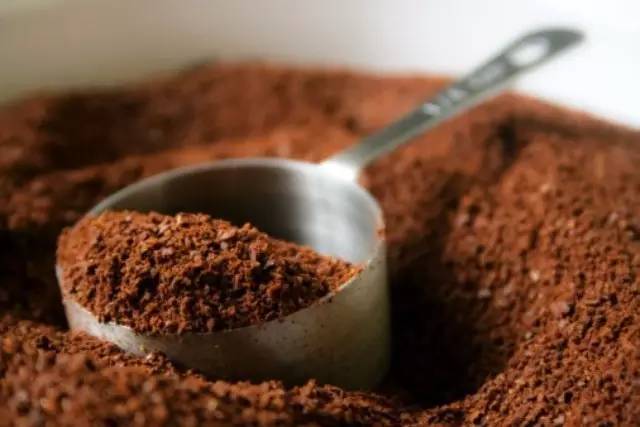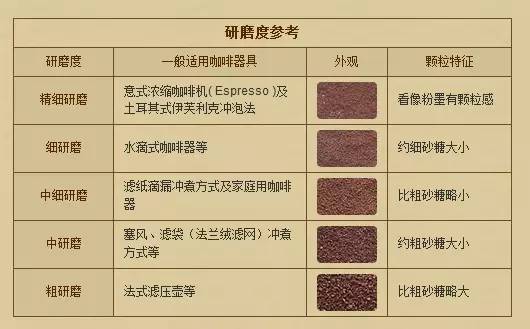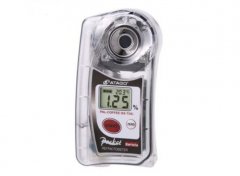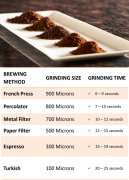Control method of Coffee extraction Coffee Powder thickness affects extraction rate
Coffee grinding thickness is closely related to the final taste of coffee. Before making coffee, a professional barista must know the effect of coffee powder grinding thickness on coffee extraction and reasonably control coffee product quality by adjusting coffee grinding thickness. Today, Chongqing Beresta Coffee training School continues to bring friends the influence of coffee grinding on coffee extraction.
The thickness affects the extraction rate
Ripe beans must be ground and crushed to open the hard textured cell walls and allow hot water to enter and extract the fragrance.
The thickness should be proportional to the extraction time.
Under normal circumstances, the fineness of coffee is inversely proportional to the extraction time and the extraction rate. It can be proved from hand brewing and espresso that the coarser the powder is, the smaller the extraction resistance is, the greater the flow rate is, the shorter the extraction time is, the lower the extraction rate is, and the lighter the taste is.
On the contrary, the finer the powder is ground, the greater the extraction resistance is, the smaller the flow rate is, and the longer the extraction time is, the higher the extraction rate is and the stronger the flavor is.
However, professional baristas will go against the trend and try to shorten the extraction time slightly when they encounter finer coffee powder, so as to avoid making bitter coffee with too high extraction rate. On the contrary, if you encounter coarser coffee powder, you will try to prolong the extraction time slightly, so as to avoid insufficient extraction and make insipid coffee.
In order to make delicious coffee, the fineness of grinding should be proportional to the extraction time, and it is more likely to produce a charming flavor spectrum.

Deep baked beans are slightly thicker, shallow baked beans are slightly thinner.
In addition, before deciding on the grinding degree of coffee beans, baristas will first look at the color and oil production of cooked beans. The lighter the roasted coffee, the more complete and hard the texture is, and the more difficult it is to extract. It is advisable to grind slightly, but not too fine, so as not to highlight the sharp and sour taste. The deeper the roasting degree of coffee, the deeper the damage to the texture, the easier to extract, it is appropriate to grind a little coarsely, deep roasting and grinding too fine will be bitter. Therefore, the degree of grinding of deep-roasted coffee is generally thicker than that of shallow roasted beans.
The thickness can control the bitterness
Roughness is a good way to control bitterness, because the finer the grinding, the higher the extraction rate, the easier it is to extract high molecular weight bitter substances such as chlorogenic acid, quinic acid, caffeine and carbides. On the contrary, if the grinding is too rough, the lower the extraction rate is, the more difficult it is to extract the astringent bitter substance with high molecular weight, but the sweet taste with middle molecular weight may remain in the coffee grounds because of insufficient extraction, which is a waste. Therefore, baristas should pay attention to whether the thickness of the powder is normal every day. Too thick or too fine will cause abnormal extraction and affect the flavor of coffee.
The degree of grinding of all kinds of bubble cooking methods, from coarse to fine, in the following order:
French filter kettle (rough grinding), electric drip pot (medium), hand punch, siphon pot, desktop smart filter cup (medium), mocha pot (medium), espresso (fine), Turkish coffee (very fine).
According to the European Fine Coffee Association (SCAE-Speciality Coffee Association of Europe), the rough grinding of the French filter pot indicates that each bean is crushed into 100,300 particles, each about 0.7mm in diameter. In the medium rough grinding of the electric filter pot, each bean is ground into 500 grains of 800 particles, with a diameter of about 0.5 mm. Moderately ground by hand and siphon, each bean is ground into 1000 to 3000 particles with a diameter of about 0.35. The fine grinding of espresso in which each bean is ground into 3500 particles with a diameter of about 0.05mm. Turkish coffee is ground into a flour-like ultra-fine powder, and each bean is ground into 15000mm 35000 particles.

Important Notice :
前街咖啡 FrontStreet Coffee has moved to new addredd:
FrontStreet Coffee Address: 315,Donghua East Road,GuangZhou
Tel:020 38364473
- Prev

Extraction methods and methods of coffee what is the extraction rate?
The taste and extraction methods of coffee are very diverse. The European Fine Coffee Association once put forward the concept of Gold cup. A certain extraction rate and coffee concentration determine the taste of coffee. However, what is the extraction rate, and what is its effect on the taste of coffee?. First of all, the concentration represents the amount of soluble matter (TDS) in your cup of coffee, so: TDS%=TDS/Coffee Weight (C
- Next

The relationship between Coffee Grinding and Coffee extraction the main points of hand Coffee
Grinding is the process of grinding coffee beans into fine particles. Its primary aim is to increase the contact area between coffee and water, thus making extraction easier. Today, Chongqing Brista professional coffee training teacher came to analyze with friends the influence of coffee powder grinding on coffee making. The degree of grinding and contact time of coffee powder with more fine grinding degree, contact of coffee particles with water
Related
- Detailed explanation of Jadeite planting Land in Panamanian Jadeite Manor introduction to the grading system of Jadeite competitive bidding, Red bid, Green bid and Rose Summer
- Story of Coffee planting in Brenka region of Costa Rica Stonehenge Manor anaerobic heavy honey treatment of flavor mouth
- What's on the barrel of Blue Mountain Coffee beans?
- Can American coffee also pull flowers? How to use hot American style to pull out a good-looking pattern?
- Can you make a cold extract with coffee beans? What is the right proportion for cold-extracted coffee formula?
- Indonesian PWN Gold Mandrine Coffee Origin Features Flavor How to Chong? Mandolin coffee is American.
- A brief introduction to the flavor characteristics of Brazilian yellow bourbon coffee beans
- What is the effect of different water quality on the flavor of cold-extracted coffee? What kind of water is best for brewing coffee?
- Why do you think of Rose Summer whenever you mention Panamanian coffee?
- Introduction to the characteristics of authentic blue mountain coffee bean producing areas? What is the CIB Coffee Authority in Jamaica?

